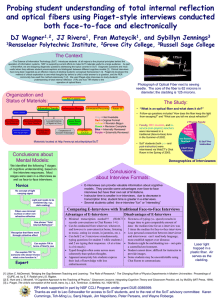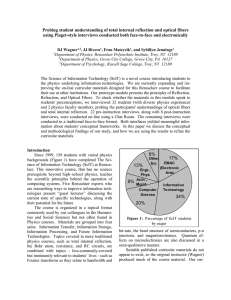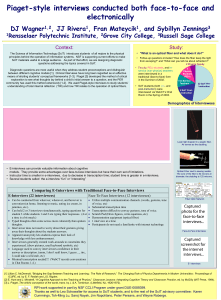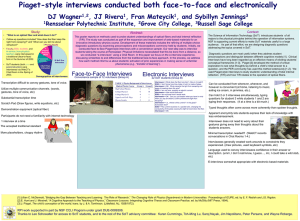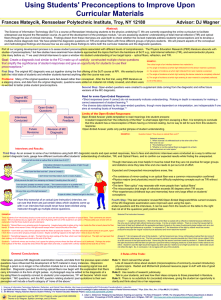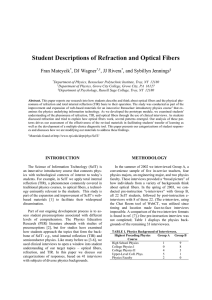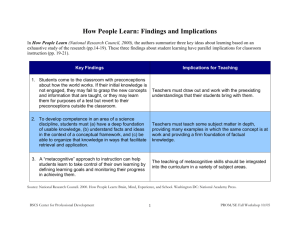STUDENT DESCRIPTIONS OF REFRACTION AND OPTICAL FIBERS
advertisement
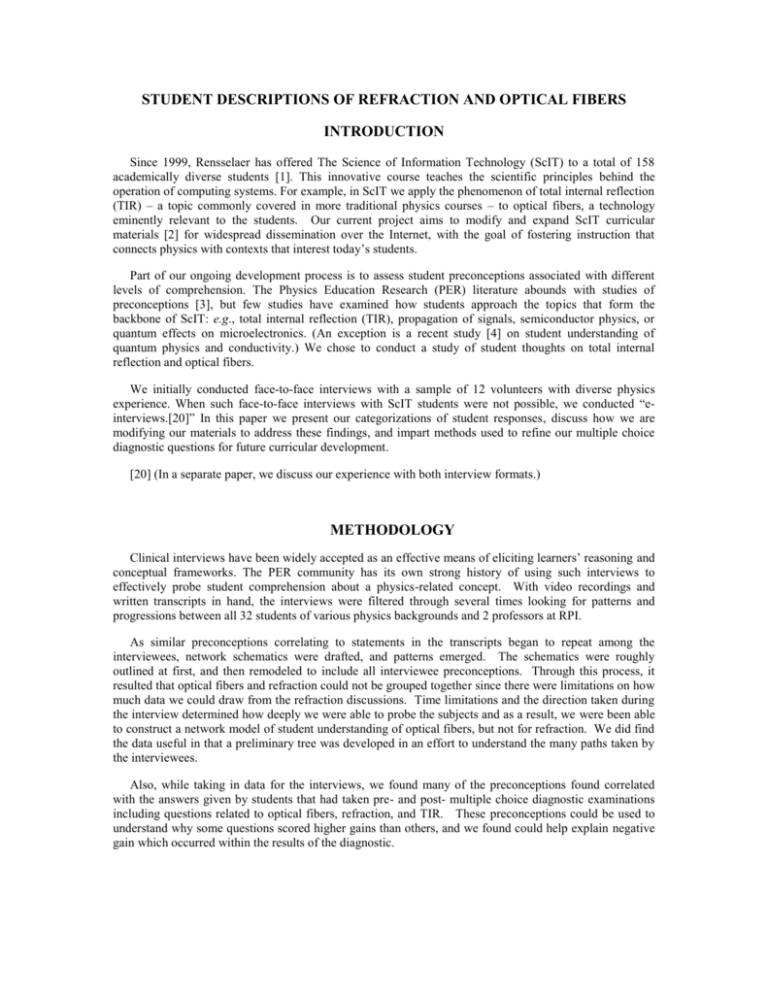
STUDENT DESCRIPTIONS OF REFRACTION AND OPTICAL FIBERS INTRODUCTION Since 1999, Rensselaer has offered The Science of Information Technology (ScIT) to a total of 158 academically diverse students [1]. This innovative course teaches the scientific principles behind the operation of computing systems. For example, in ScIT we apply the phenomenon of total internal reflection (TIR) – a topic commonly covered in more traditional physics courses – to optical fibers, a technology eminently relevant to the students. Our current project aims to modify and expand ScIT curricular materials [2] for widespread dissemination over the Internet, with the goal of fostering instruction that connects physics with contexts that interest today’s students. Part of our ongoing development process is to assess student preconceptions associated with different levels of comprehension. The Physics Education Research (PER) literature abounds with studies of preconceptions [3], but few studies have examined how students approach the topics that form the backbone of ScIT: e.g., total internal reflection (TIR), propagation of signals, semiconductor physics, or quantum effects on microelectronics. (An exception is a recent study [4] on student understanding of quantum physics and conductivity.) We chose to conduct a study of student thoughts on total internal reflection and optical fibers. We initially conducted face-to-face interviews with a sample of 12 volunteers with diverse physics experience. When such face-to-face interviews with ScIT students were not possible, we conducted “einterviews.[20]” In this paper we present our categorizations of student responses, discuss how we are modifying our materials to address these findings, and impart methods used to refine our multiple choice diagnostic questions for future curricular development. [20] (In a separate paper, we discuss our experience with both interview formats.) METHODOLOGY Clinical interviews have been widely accepted as an effective means of eliciting learners’ reasoning and conceptual frameworks. The PER community has its own strong history of using such interviews to effectively probe student comprehension about a physics-related concept. With video recordings and written transcripts in hand, the interviews were filtered through several times looking for patterns and progressions between all 32 students of various physics backgrounds and 2 professors at RPI. As similar preconceptions correlating to statements in the transcripts began to repeat among the interviewees, network schematics were drafted, and patterns emerged. The schematics were roughly outlined at first, and then remodeled to include all interviewee preconceptions. Through this process, it resulted that optical fibers and refraction could not be grouped together since there were limitations on how much data we could draw from the refraction discussions. Time limitations and the direction taken during the interview determined how deeply we were able to probe the subjects and as a result, we were been able to construct a network model of student understanding of optical fibers, but not for refraction. We did find the data useful in that a preliminary tree was developed in an effort to understand the many paths taken by the interviewees. Also, while taking in data for the interviews, we found many of the preconceptions found correlated with the answers given by students that had taken pre- and post- multiple choice diagnostic examinations including questions related to optical fibers, refraction, and TIR. These preconceptions could be used to understand why some questions scored higher gains than others, and we found could help explain negative gain which occurred within the results of the diagnostic.
